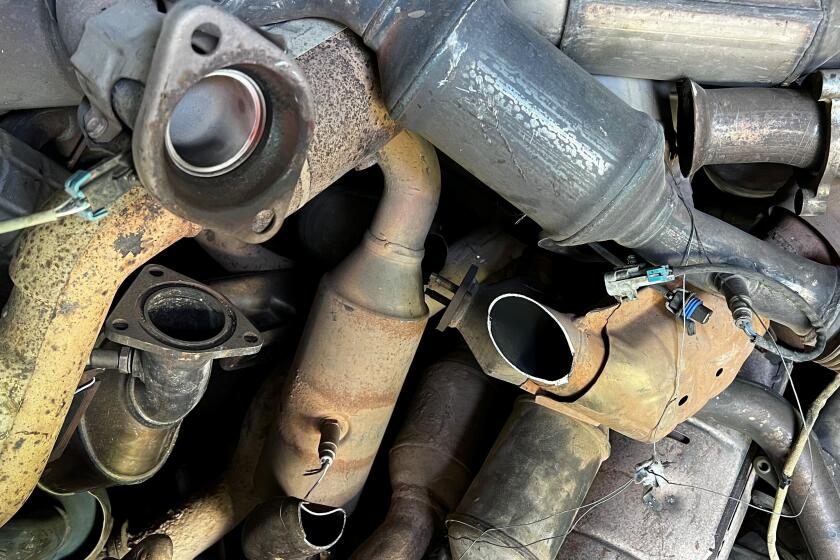As Wilmington Suspected, Study Finds Port Gets More Containers Than It Ships
- Share via
The Port of Los Angeles reported Tuesday that it imported nearly 117,000 more cargo containers than it exported over a recent 20-month period, heightening concerns in Wilmington about the large number of empty containers stored there.
“At what point do we have enough?” Harbor-area Councilwoman Joan Milke Flores asked port officials at a Los Angeles City Council committee meeting Tuesday. “Are we going to store them forever?”
Flores and community leaders have long complained about the storage of containers in Wilmington, but the statistics released Tuesday for the first time shed light on the potential magnitude of the problem.
Although the Harbor Department does not keep track of containers once they enter the port--many are shipped inland on trucks and trains--city officials said the import-export imbalance is a clear indication that a large number of containers sit empty in the harbor area once they are unloaded.
During a 20-month period ending in August, the port imported nearly 900,000 containers, including 100,000 that were already empty, according to port statistics. During the same period, the port exported 783,000 containers, including 227,000 that were empty. The average container is 20 feet long, 8 feet high and 8 feet wide and resembles the trailer on a tractor-trailer rig.
“I can check how the trade balance is between the United States and other countries by figuring out how many containers are stored in my district,” Flores said. “It is getting to be an onerous problem.”
The statistics on cargo containers were contained in a report prepared by the Harbor Department for the council’s Commerce, Energy and Natural Resources Committee, which Flores heads. Flores asked the department last year to begin monitoring the movement and storage of containers in Wilmington in an effort to come up with ways to reduce truck traffic in residential areas and eliminate unsightly storage yards.
At Tuesday’s meeting, Flores commended the department for coming up with truck routes away from residential areas, but she complained the port has not done enough about the storage problem.
“I just don’t know what the solution is, but I want to tell you that we are going to draw the line in my district on storing containers that don’t have any possibility of future use,” Flores said.
Harbor Department Analyst Peter Mandia said the port is exploring the possibility of opening storage yards further inland, but the report prepared for the council cautioned that storage yards in Wilmington will not disappear even then, because shipping lines need some “near dock” storage.
Flores and fellow committee member Ruth Galanter instructed the Harbor Department to return with a new report in three months that will include suggestions about eliminating some of the storage yards in Wilmington. Flores also asked the city administrative office to explore the possibility of imposing a special tax on containers stored in Wilmington, similar to a storage charge assessed by the Harbor Department for containers kept on port property for more than one week.
More to Read
Sign up for Essential California
The most important California stories and recommendations in your inbox every morning.
You may occasionally receive promotional content from the Los Angeles Times.










